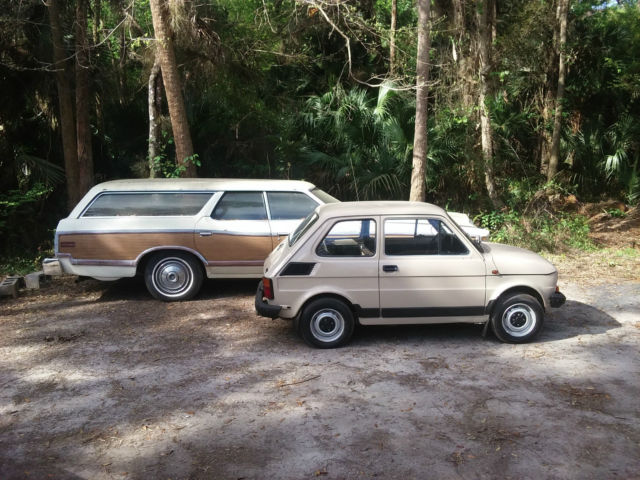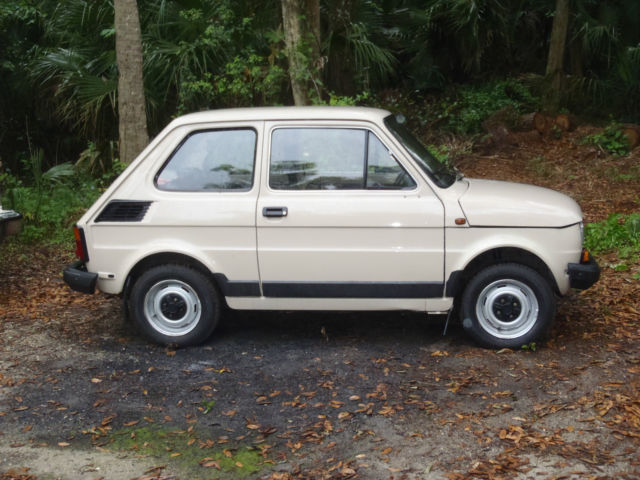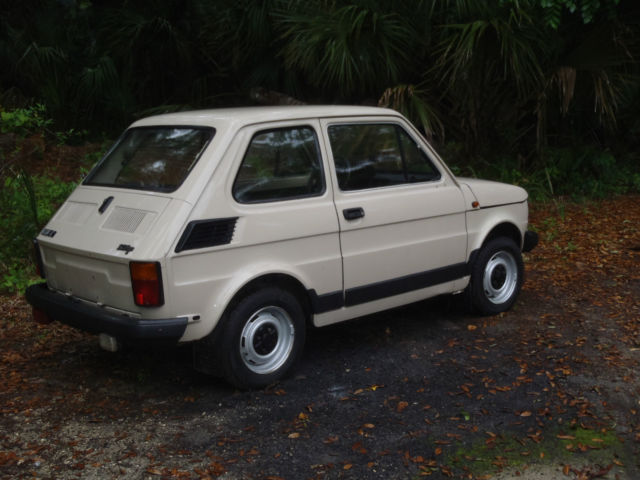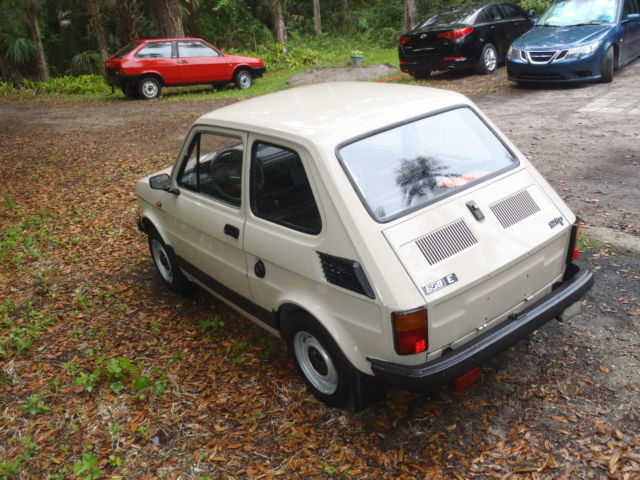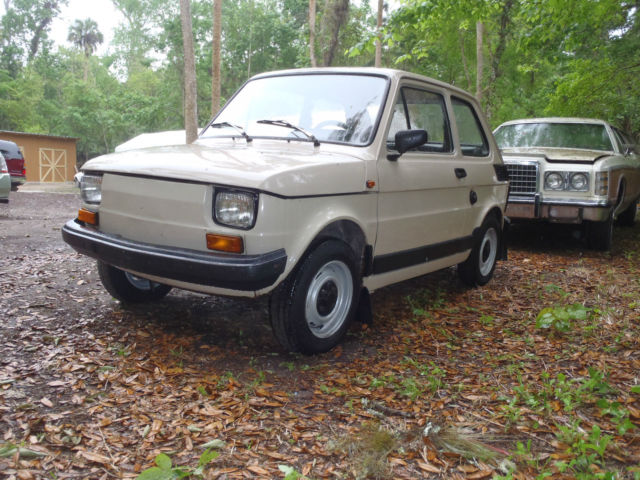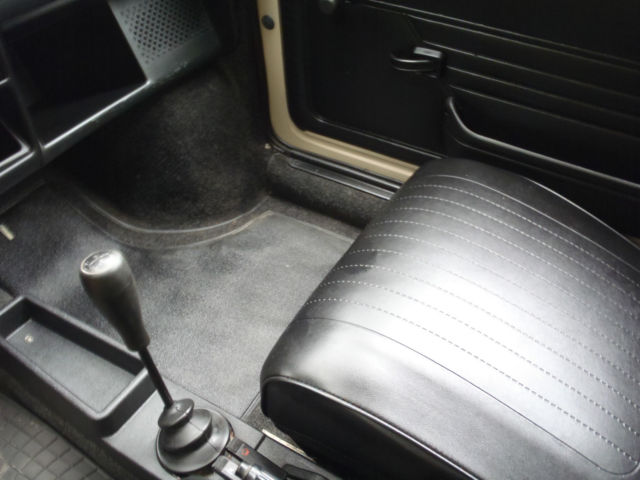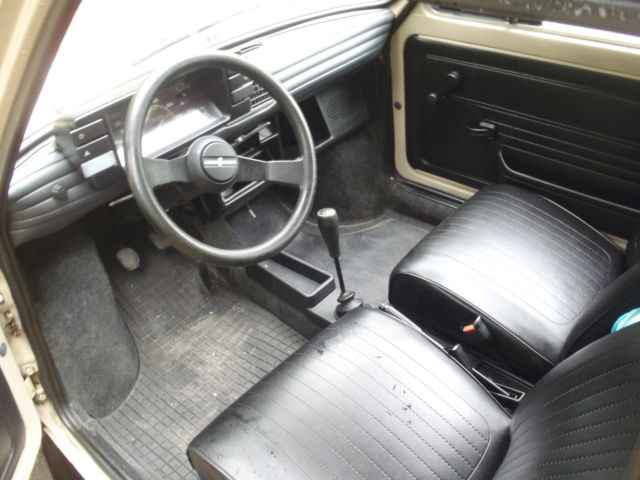FIAT 126 P, 650, 500, ONLY 49K MILES, NICE ORIGINAL CAR. LOW RESERVE
- Price:
- Location: Sanford, Florida, United States
- Condition: Used
- Make: Fiat
- Model: FIAT 126 P,
- Trim: 650
- Year: 1979
- Mileage: 49,866
- VIN: SUF126A0019498298
- Color: Tan
- Engine size: 650
- Number of cylinders: 2
- Fuel: Gasoline
- Transmission: Manual
- Drive type: RWD
- Interior color: Black
- Vehicle Title: Clear
1979 Fiat FIAT 126 P, Description
IT IS AN 1989 FIAT 126 P, BUT I HAD TO LIST AS 1979 BECAUSE EBAY SYSTEM DID NOT RECOGNIZE THE VIN. RECENTLY IMPORTED FROM EUROPE. ALL THE DUTIES ARE PAID AND HAS CLEAR SC TITLE. NICE ORIGINAL CONDITION, INTERIOR LOOKS NEW.After close inspection I found some paint job on the car (front fenders, hood looks original ). Runs and dives smoothly. Nothing wrong, everything works. Needs nothing just a new home.
If you see my other listing (the Lada) which is flawless show car quality (10 on scale of 10), this one is an 8 on scale of 10.
Located in central Florida.
The 126 used much of the same mechanical underpinnings and layout as its Fiat 500 rear-engined predecessor with which it shared its wheelbase, but featured an all new bodyshell closely resembling a scaled-down Fiat 127.
Engine capacity was increased from 594cc to 652cc at the end of 1977 when the cylinder bore was increased from 73.5 to 77mm.[3] Claimed power output was unchanged at 23PS (17kW), but torque was increased from 39N·m (29lb·ft) to 43 newton metres (32lb·ft).[3] The 594cc engines were still available in early 1983 production.
A subsequent increase took the engine size to 704cc in new "restyling" model Fiat 126 Bis (1987–1991), with 26PS (19kW) of motive power.
In Italy, the car was produced in the plants of Cassino and Termini Imerese until 1979. By this time 1,352,912 of the cars had been produced in Italy.
The car continued however to be manufactured by FSM in Poland, where it was produced from 1973 to 2000 as the Polski Fiat 126p. Even after the introduction of the 126 Bis (a 126p with water-cooled 704cc engine of indigenous Polish construction), the original model continued to be produced for the Polish market. The car was also produced under licence by Zastava in Yugoslavia. In 1984, the 126 received a facelift, giving it plastic bumpers (for all versions) and a new dashboard. This model named Fiat 126p FL. In 1994, the 126p received another facelift, and some parts from the Fiat Cinquecento, this version was named 126 EL. The 126 ELX introduced a catalytic converter.
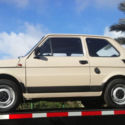 FIAT 126 P, 650, 500, ONLY 49K MILES, NICE ORIGINAL CAR. GREAT CONDITION, 1989
FIAT 126 P, 650, 500, ONLY 49K MILES, NICE ORIGINAL CAR. GREAT CONDITION, 1989
Mileage: 49,870
 1982 FIAT X-1/9 ORIGINAL 1 OWNER CAR - FROM HAWAII - 86K MILES - NO RESERVE
1982 FIAT X-1/9 ORIGINAL 1 OWNER CAR - FROM HAWAII - 86K MILES - NO RESERVE
Mileage: 86,420
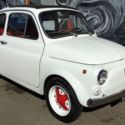 2018 Fiat 500L 27K original miles No reserve - Just imported
2018 Fiat 500L 27K original miles No reserve - Just imported
Mileage: 27000
 1958 Fiat Nuova 500 America Convertible NO RESERVE Only 18K Original Miles!
1958 Fiat Nuova 500 America Convertible NO RESERVE Only 18K Original Miles!
Mileage: 18,316
 1983 Fiat Pininfarina 124 Spider convertible 23,918 ORIGINAL miles - NO RESERVE
1983 Fiat Pininfarina 124 Spider convertible 23,918 ORIGINAL miles - NO RESERVE
Mileage: 23,918
 1982 FIAT 124 Spyder show & go Fiat, original, low miles
1982 FIAT 124 Spyder show & go Fiat, original, low miles
Mileage: 76,127
 1972 Fiat 124 Spider, Nice Solid Early Car, 1608cc ~ NO RESERVE
1972 Fiat 124 Spider, Nice Solid Early Car, 1608cc ~ NO RESERVE
Mileage: 27723
 1970 Fiat 500 Yellow Abarth Upgrades 650cc Engine Nice shape No Reserve
1970 Fiat 500 Yellow Abarth Upgrades 650cc Engine Nice shape No Reserve
Mileage: 50056
 1970 Fiat 500 Yellow Abarth Upgrades 650cc Engine Nice shape Low Reserve
1970 Fiat 500 Yellow Abarth Upgrades 650cc Engine Nice shape Low Reserve
Mileage: 50056
 1980 Fiat 124 Spider 2000 last year of Carburetor in original shape nice seat in
1980 Fiat 124 Spider 2000 last year of Carburetor in original shape nice seat in
Mileage: 117388
